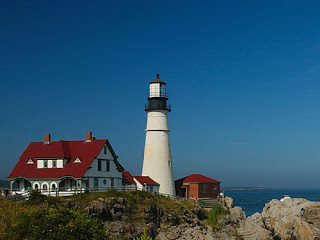First Day hikes are popular with individuals and families as a way to welcome the new year while enjoying the outdoors and connecting with nature.
In 2020, nearly 85,000 people celebrated the New Year outdoors, collectively hiking over 176,366 miles throughout the country on the guided hikes. Other participants hiked state park trails throughout the day.
In normal circumstances, America’s State Parks host a full range of First Day Hike events. According to America’s State Parks (www.stateparks.org), states will be adapting their 2021 First Day hikes to keep people safe and healthy during the COVID-19 Coronavirus Pandemic.
Changes will include hikes with smaller groups, virtual hikes, self-guided hikes and trail challenges. States will be adding events and trails throughout the month of December. Hike distances and difficulty levels may vary from park to park.
New England First Day Hike Events:
Maine
Virtual Adventures - Maine Bureau of Parks and Lands
New Hampshire
Virtual First Day Hike Event - New Hampshire State Parks
Connecticut
Virtual and Self-Guided Hikes in Connecticut - Connecticut Department of Energy and Environmental Protection (DEEP)
Hiking Areas in New England
While many First Day hikes are affected by the pandemic, the region has plenty of public lands and other areas where individuals and families can enjoy hiking, walking, and other outdoor recreation. The following are a few locations where hiking and exploring are possible.
The Green Mountain National Forest in western Vermont is one of New England's most popular hiking destinations. A public, federally managed national forest, Green Mountain is home to miles of trails and other areas for outdoor recreation. For information about health and safety precautions for Vermont, visit https://www.healthvermont.gov/response/coronavirus-covid-19
In Northwest Massachusetts, the Mohawk Trail Woodlands encompasses 361,941 acres of northern forests, wetlands, unique geology, and a biologically diverse ecosystem.
Along the coast of Massachusetts, Cape Cod National Seashore includes miles of sandy beaches, lighthouses, marshes, ponds, cranberry bogs, and upland landscapes. Twelve walking trails at the Cape Cod seashore are open year round. Cape Cod National Seashore is located approximately 20 miles east of Hyannis, MA.
In Rhode Island, state parks and saltwater beaches are open with limitations in place. The number of parking spots will be reduced, and parking gates may need to be closed at times depending on beach capacity. For more information, visit: https://riparks.com/covid19.php
2021 First Day Hikes Resources
The full listing of First Day Hikes and other special programs in America’s State Parks is available at:
https://www.stateparks.org/special-programs/first-day-hikes/
America's State Parks - First Day Hikes
American Hiking Society - First Day Hikes








